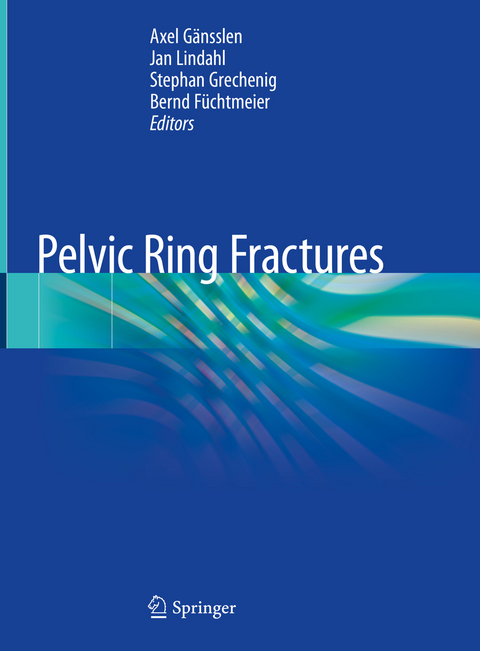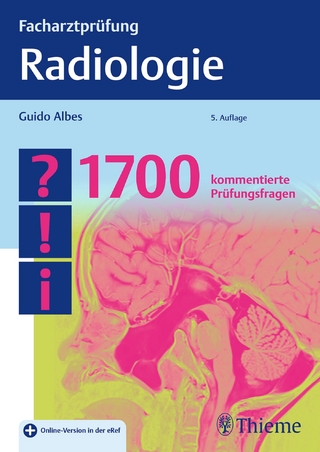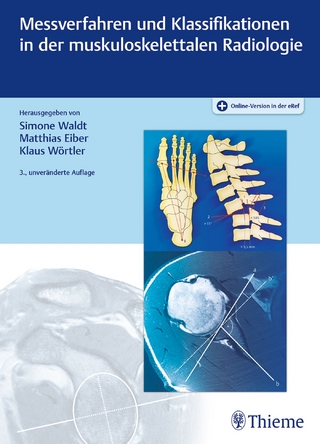
Pelvic Ring Fractures
Springer International Publishing (Verlag)
978-3-030-54729-5 (ISBN)
This book provides in-depth coverage of all aspects of pelvic ring fractures and their management. The opening chapters supply essential information on surgical anatomy, biomechanics, classification, clinical evaluation, radiological diagnostics, and emergency and acute management. The various operative techniques, including navigation techniques, that have been established and standardized over the past two decades are then presented in a step-by-step approach. Readers will find guidance on surgical indications, choice of approaches, reduction and fixation strategies, complication management, and optimization of long-term results. Specific treatment concepts are described for age-specific fractures, including pediatric and geriatric injuries, and secondary reconstructions.
Pelvic ring fractures represent challenging injuries, especially when they present with concomitant hemodynamic instability. This book will help trauma and orthopaedic surgeons at all levels of experience to achieve the primary treatment aim of anatomic restoration of the bony pelvis to preserve biomechanical stability and avoid malunion with resulting clinical impairments.
Axel Gänsslen, MD, is a Consultant in Trauma Surgery in the Trauma Department, Wolfsburg General Hospital Wolfsburg, Germany. Since 2012 he has also been Chairman of the AO Trauma Course - Pelvis and Acetabulum in the Department of Anatomy, University of Graz, Austria. Dr. Gänsslen graduated from Hannover Medical School (MHH) in 1993 and subsequently undertook a number of residencies in trauma surgery before becoming a Consultant in Trauma Surgery in the Trauma Department of Hannover Medical School in 2006. Since 1994 he has been Regional/International Faculty on more than 100 AOTrauma Courses. He is the author of numerous papers in peer-reviewed journals as well as five books and more than 50 book chapters. J an Erik Lindahl, MD, PhD, is Head of the Pelvis and Lower Extremity Orthopaedic and Trauma Surgery Ward at Helsinki University Hospital and Adjunct Professor (Docent) in Orthopaedics and Traumatology at the University of Helsinki, Finland. He graduated from the University of Tampere in 1986 and subsequently completed specializations in Orthopaedics and Traumatology and General Surgery at the University of Helsinki before taking up his current post in 2000. Dr. Lindahl has been chairman of AOTrauma Finland since 2010 and is a past president of the Finnish Trauma Association, of which he was a founding member. He has received various awards, including the Hughston Award for best paper published in the American Journal of Sports Medicine in 2006. He is the author of almost 50 original articles and more than 30 book chapters, predominantly on management of injuries of the pelvic ring and acetabulum, fractures of the lower extremities, and knee injuries. Stephan Grechenig, MD, Priv. Doz. Dr. med. univ. , is a resident in Orthopaedic and Trauma Surgery at the Clinic for Trauma Surgery, Orthopaedics and Sports Medicine, Krankenhaus Barmherzige Brüder, Regensburg, Germany. He graduated from Medical School at the University of Graz, Austria in 2013 and subsequently was a post-doc in Musculoskeletal Biomechanics at the AO Research Institute, Davos, Switzerland and a resident in Trauma Surgery at the University Medical Center, Regensburg, Germany. He is a member of AOTrauma, the AO Faculty Group, and the German Society for Trauma Surgery (DGU) and is the author of almost 50 PubMed-listed articles. Bernd Füchtmeier, MD, is Head of the Department for Trauma and Orthopaedic Surgery at the Krankenhaus Barmherzige Brüder, Regensburg, Germany. After graduating from Medical School in Hannover, he undertook extensive training in orthopaedic surgery. Dr. Füchtmeier was appointed as a consultant in the Department of Traumatology, Regensburg University Clinic in 2001 and subsequently became Head of the Section of Pelvic Surgery and Arthroplasty. He gained his habilitation in trauma surgery in 2007. In 2008 he was appointed senior consultant in the Clinic for Trauma Surgery, Orthopaedics, and Sports Medicine at Krankenhaus Barmherzige Brüder. Prior to taking up his current position, he was a consultant at the Center for Musculoskeletal Surgery, Charité University Clinic, Berlin. In 2011 Dr. Füchtmeier was appointed Associated Professor in the Medical Faculty, University of Regensburg. He is a member of the Advisory Board for AO Trauma Germany.
PART I INTRODUCTION Chapter 1 The History of Pelvic Fracture Treatment.- Chapter 2 Surgical Anatomy of the Pelvis.- Chapter 3 Biomechanics of the Pelvis.- Chapter 4 Classification of Pelvic Ring Injuries.- Chapter 5 Prehospital Treatment of Suspected Pelvic Injuries.- Chapter 6 Inhospital Clinical Examination.- Chapter 7 Radiological Diagnostics.- PART II EMERGENCY MANAGEMENT Chapter 8 Introduction - Emergency Management.- Chapter 9 Emergency Stabilization - Pelvic Binder.- Chapter 10 Emergency Management - Pelvic C-Clamp.- Chapter 11 Mechanical Stabilization: DC-Osteosynthesis.- Chapter 12 Pelvic Packing.- Chapter 13 Direct Hemorrhage Control: Vascular DC-Treatment.- Chapter 14 Emergency Management - Resuscitative Endovascular Balloon Occlusion of the Aorta (REBOA).- Chapter 15 Indirect Hemorrhage Control: Angiography/Embolization (AE).- Chapter 16 Coagulation Management.- Chapter 17 Open Pelvic Fractures.- Chapter 18 Morel-Levallée Lesions.- Chapter 19 Pelvic Compartment Syndrome.- Chapter 20 Traumatic Hemipelvectomy.- Chapter 21 Urological Trauma.- PART III TREATMENT OF PELVIC RING INJURIES Chapter 22 Principles of Treatment of Pelvic Ring Injuries.- Chapter 23 Symphyseal Disruption.- Chapter 24 Retrograde Pubic Rami Screw.- Chapter 25 External Fixation.- Chapter 26 Subcutaneous Anterior Pelvic Fixation.- Chapter 27 Ilium Fractures.- Chapter 28 Anterior Plating SI-joint.- Chapter 29 SI-joint - Posterior Reduction and Stabilization.- Chapter 30 Fracture Dislocations of the SI-Joint.- Chapter 31 Iliosacral Screw Fixation.- Chapter 32 Local Sacral Plating.- Chapter 33 Lower Transverse Sacral Fractures.- Chapter 34 Ilio-iliacal Osteosynthesis.- Chapter 35 Lumbopelvic Fixation.- PART IV SPECIAL SITUATIONS Chapter 36 Pediatric Pelvic Ring Injuries.- Chapter 37 Avulsion Injuries.- Chapter 38 Fragility Fractures.- Chapter 39 Intraoperative 3D Imaging of the Pelvic Ring.- Chapter 40 Implant Removal.- Chapter 41 Infectious Complications After Pelvic Ring Surgery.- Chapter 42 Pelvic Malunion and Non-Union.- Chapter 43 ~ Outcome After Pelvic Ring Injuries.
| Erscheinungsdatum | 05.01.2021 |
|---|---|
| Zusatzinfo | XIV, 631 p. 572 illus., 394 illus. in color. |
| Verlagsort | Cham |
| Sprache | englisch |
| Maße | 210 x 279 mm |
| Gewicht | 2115 g |
| Themenwelt | Medizin / Pharmazie ► Medizinische Fachgebiete ► Chirurgie |
| Medizinische Fachgebiete ► Radiologie / Bildgebende Verfahren ► Radiologie | |
| Schlagworte | Biomechanics • emergency management • Geriatric fractures • operative technique • Pathomechanics • pediatric fractures • Pelvic ring injury • Surgical technique |
| ISBN-10 | 3-030-54729-9 / 3030547299 |
| ISBN-13 | 978-3-030-54729-5 / 9783030547295 |
| Zustand | Neuware |
| Haben Sie eine Frage zum Produkt? |
aus dem Bereich


